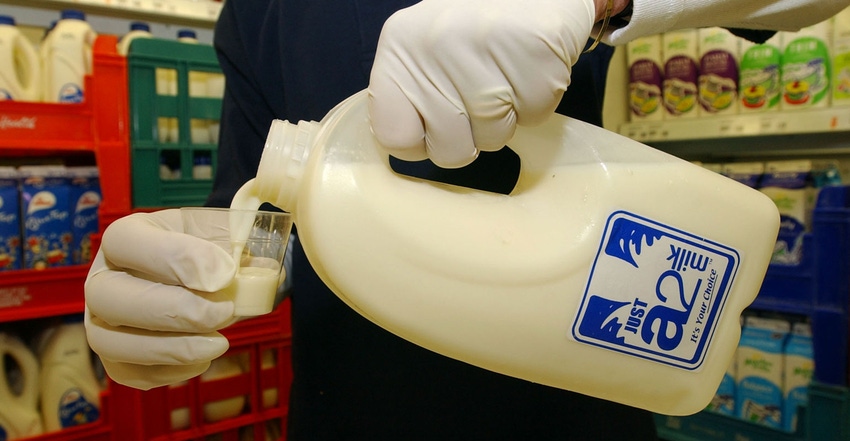January 15, 2019

Consumer demand for more food transparency will affect dairy supply chains in many ways, leading to more opportunities and challenges, according to a new report from CoBank’s Knowledge Exchange Division.
“Dairy supply chains are adapting in order to meet consumer demands for increased transparency about farm production practices,” says Ben Laine, senior economist for the dairy sector at CoBank. “However, the entire industry will be forced to walk a fine line to meet these demands in an environment in which cost reduction and efficiency are a constant [and] will require reworking supply chains into greater segmentation and direct contracts with farms.”
Product labeling
In stores, customers are looking for labels that show farm management practices. Nearly one-third of all food products sold has at least one transparency claim on the label. In many categories where conventional product sales are declining, products with transparency claims are growing.
Producers who want to serve this diversifying market face challenges. With the expansion of product offerings, the risk rises that retailers will require differing and potentially conflicting farm management practices from their suppliers. To mitigate this, the National Milk Producers Federation developed the Farmers Assuring Responsible Management program as a proactive step to define and audit responsible farm management as an industry. This prevents individual farms from being susceptible to unique requirements based on the retailer they ultimately supply.
Supply chain challenges
Managing price and input volatility can be more challenging for producers who sell a niche product. Producing certified organic milk, for example, requires a costly three-year transition for a conventional farm, followed by ongoing higher feed costs.
“This desire for transparency has also led to a restructuring of the way dairy processors develop milk supply contracts,” Laine says. “One notable example is Danone’s move to provide yogurt made from the milk of cows that have been fed non-GMO feed. This is a unique niche, tapping into a consumer who is not looking for organic, but does want their food GMO-free.”
Sourcing GMO-free milk without going to the organic market has necessitated “cost-plus” contracts between processors and dairy producers where the producers are offered a fixed margin over their cost.
Growth of A2 milk
One of the newest and fastest growing milk segments is A2 milk.
A2 milk, which contains only the A2 beta-casein protein, is said to be easier to digest than normal milk. It is now available in about 9,000 stores.
Achieving A2-only production at the farm level is a matter of breeding and genetics. Some farms have already started transitioning the genetics of their herds in anticipation of continued growth in this market.
“With any of these specific new products, the challenge to the supply chain is that there is no longer one commoditized pool of milk to be distributed efficiently into different products and brands,” Laine says. “Instead, there are a number of brands and manufacturers which now need to work back to the farm level to contract directly for a segregated milk supply.”
As a result, cooperatives may see their members securing direct contracts elsewhere for a premium price. Many farms, though, still prefer the stability of cooperative membership, especially in the wake of highly publicized contract cancellations between producers and milk processors. Some cooperatives might look for opportunities to segment portions of their milk supply to accommodate growing markets such as A2.
Bridging the connection gap
Many consumers want a more direct connection to the farmers who produce their food, which has contributed to an increased desire for locally produced foods.
Although the definition of “local” varies by consumer, it generates a sense of being part of a regional eco-system rather than a global supply chain, creating a sense of reduced transportation and environmental impact.
Farmers markets are very popular these days and provide a potential opportunity for producers. While commanding premium prices, these markets provide a place for farmers to interact directly with consumers, building trust and connections.
“While directly marketing to consumers can add a premium value to dairy products, it requires the benefit of being located in proximity to a metro area and a willingness to alter the business model and become actively involved in marketing,” Laine says. “This carries additional risk, and there is limited room for competition from multiple producers in any given market. It is far from an industry-wide solution, but (it) can provide opportunity to farms willing to devote the time and effort to developing a marketing plan.”
Source: CoBank, which is solely responsible for the information provided and is wholly owned by the source. Informa Business Media and all its subsidiaries are not responsible for any of the content contained in this information asset.
You May Also Like




